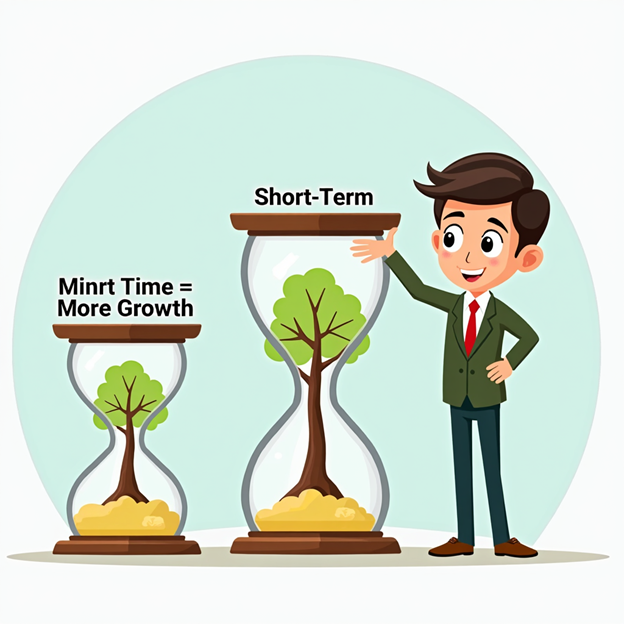There are no items in your cart
Add More
Add More
| Item Details | Price | ||
|---|---|---|---|
Time horizon is the secret ingredient to smart investing. Discover how long you should stay invested in mutual funds to meet your goals — and why it matters more than market timing.
14/06/2025
“How long should I stay invested?” is a question most investors forget to ask — but it’s crucial. Your investment time horizon determines not only what kind of mutual fund you should pick but also how you react to market ups and downs. Whether it’s saving for your child’s education or retirement, time is your best friend in compounding returns and managing risk.
What Is Time Horizon in Mutual Fund Investing?
Time Horizon refers to the length of time you plan to hold an investment before needing the money. It shapes your:

General Thumb Rule:
| Time Horizon | Ideal Fund Type |
| 0–1 year | Liquid / Ultra Short |
| 1–3 years | Short Duration Debt |
| 3–5 years | Conservative Hybrid |
| 5+ years | Equity or Flexi Cap |
Real-Life Example: Arun vs. Rachna
Why Time Horizon Matters
✅ Short horizon: Avoid equity, go for stability
✅ Long horizon: Ride market cycles and gain from compounding
Conclusion
Before you invest, ask: “When will I need this money?”
Let that answer guide your fund selection — not just gut feeling or market trends.Discuss your goals and time horizon with your advisor — and match your investments with your future needs, not just present preferences.
Summary Table: Fund Type by Time Horizon
| Time Horizon | Ideal Fund Type | Expected Return (CAGR) | Risk Level |
| <1 year | Liquid / Ultra Short | 4% – 6% | Very Low |
| 1–3 years | Short Duration Debt | 6% – 7% | Low |
| 3–5 years | Hybrid / BAFs | 7% – 9% | Medium |
| 5+ years | Equity / Flexi Cap | 10% – 14% | Medium–High |

Dr. Satish Vadapalli
Research Analyst